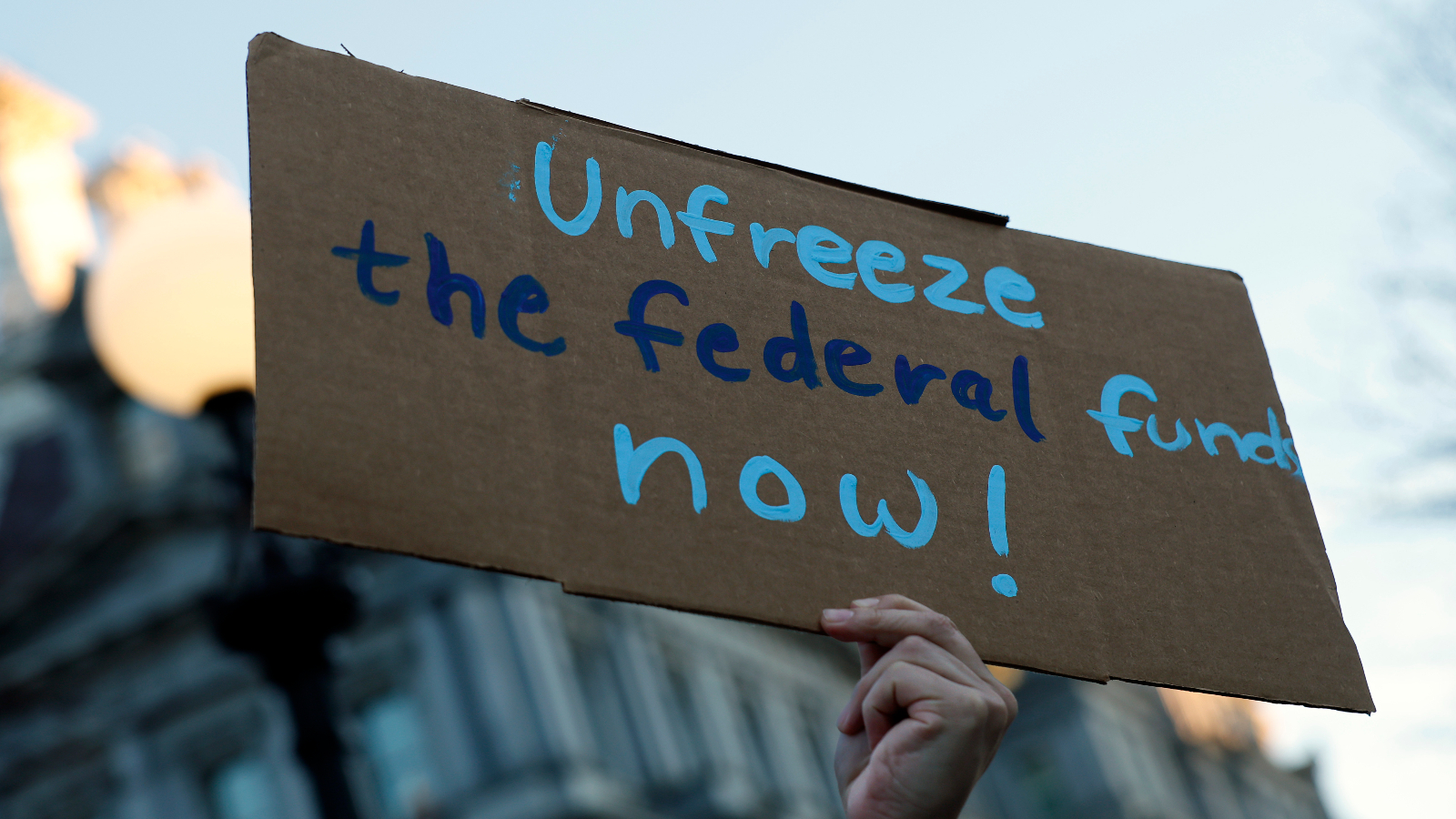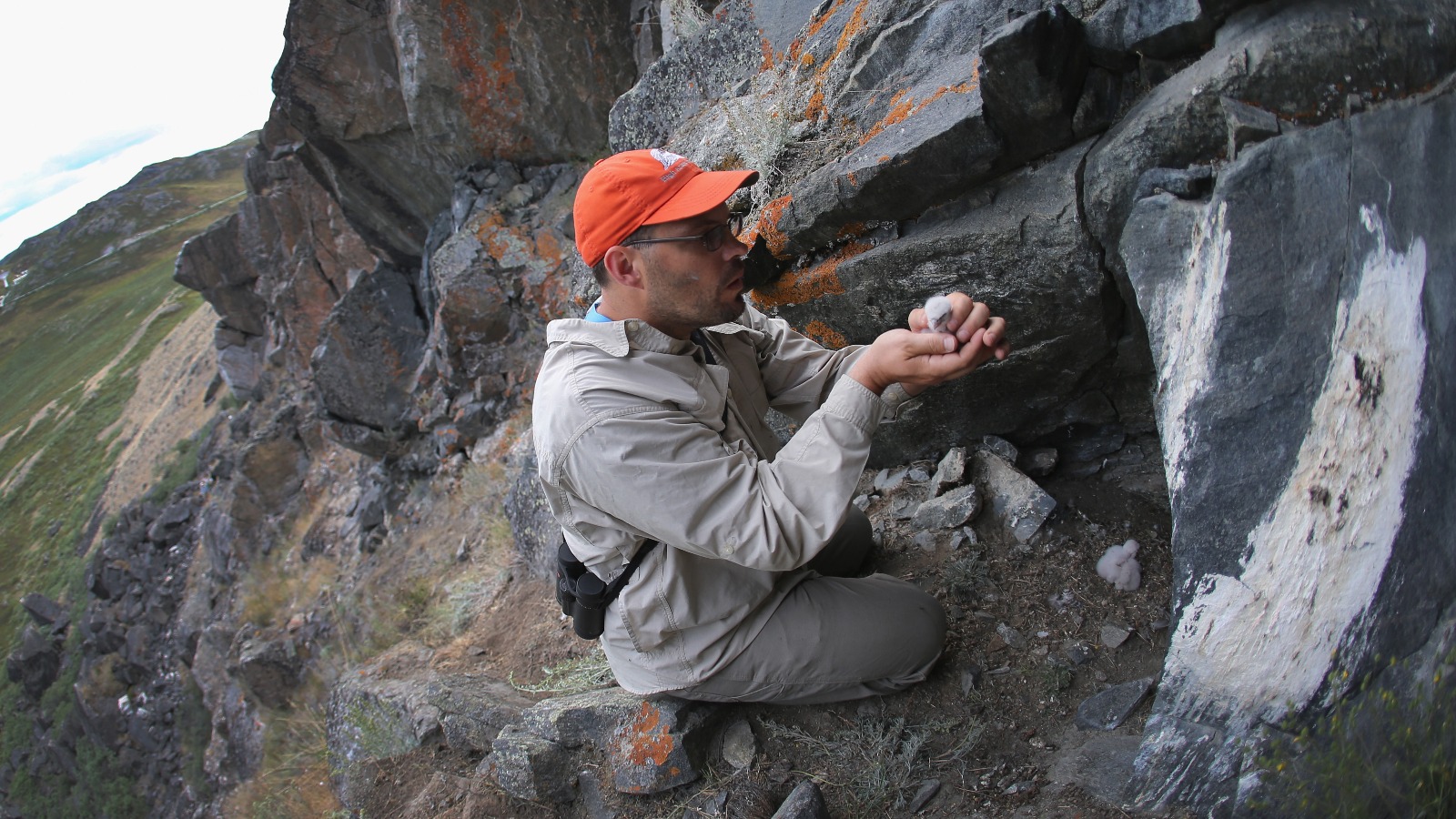Gabriel Filippelli got the form letter from the U.S. State Department on a Monday morning two and a half weeks ago. Since October, Filippelli has been teaching students and faculty in Pakistan how to use air quality devices to monitor air pollution exacerbated by rising temperatures — a consequence of climate change. The letter from the State Department, which had awarded the $300,000 underpinning the collaboration, said the funding was suspended, effective immediately. The project, it said, “no longer effectuates the priorities of the agency.”
Since President Donald Trump took office on January 20, his administration has sought to pause, eliminate, and claw back federal funding for research across the federal government.
Filippelli, the executive director of the Environmental Resilience Institute at Indiana University, is a poster boy for the on-the-ground effects of these new policies. One of his research proposals at the National Institutes of Health, or NIH, the federal agency that funds and executes medical research, is frozen. Another proposal and four grants at the National Science Foundation, the country’s non-medical science and engineering research agency, are on pause. The institute he directs relies on a $5 million grant from the Inflation Reduction Act, or IRA, the law Democrats passed in 2022 that directs hundreds of billions of dollars worth of investments to climate and environmental justice projects. The institute has been pulling from that money, which was authorized by Congress, since 2023 — but Filippelli is worried that Trump will try to take the remaining balance away.
Practically overnight, the steady stream of funding that allows Filippelli to conduct research, collaborate with colleagues, pay graduate students, and keep his institute running has become an endangered resource. He had to cancel upcoming trips to Pakistan, and reports experiencing confusion and doubt — unusual sensations for a veteran researcher long used to navigating the intricacies of the federal funding ecosystem.
Filippelli is not alone. Most researchers working in this country benefit from the roughly $200 billion the government makes available annually via various agencies and initiatives for research and development at some point in their careers. Hundreds of thousands of scientists, and their institutions by association, are sustained by this funding, which is responsible for some of humanity’s biggest scientific breakthroughs: weather forecasting technology, the flu vaccine, the Human Genome Project, the first nuclear reactor, the Internet, and GPS.
But that funding, which comprises a tiny fraction of total federal spending, is now in jeopardy, as Trump undertakes what will likely go down as one of the most abrupt and profound shifts in federal research and development policy in American history. In its first few weeks, the Trump administration sought to freeze all federal grants and loans — and has defied judges who have ordered the executive branch to release the funding. Trump’s staff also issued a list of phrases, including the words “underrepresented,” “socioeconomic,” and “community,” that will cause a federal research grant at the National Science Foundation to get flagged for further review. The president summarily dismissed government watchdogs responsible for making sure federal dollars get to where they’re supposed to go. The administration has also offered buyouts to more than 2 million federal employees, many of whom are tasked with distributing federal funding for research.
If these changes become permanent, they will have far-reaching consequences for the country’s understanding of and response to climate change for years, experts told Grist. “What it looks like to me is an absolute full-on brakes moment for any further climate advances at least in the short term,” Filippelli said. “But I think what people don’t fully recognize is that if you disrupt funding on a wide scale, even for a short time, the hangover effect lasts for a long time.”
Joe Raedle / Getty Images
Before 2022, the federal government spent less than $15 billion annually on all of its climate change programs, including climate research and development initiatives. The passage of the Inflation Reduction Act, the largest climate spending bill in U.S. history, marked the beginning of a new era. Most of the roughly $370 billion in climate-focused spending in that legislation was earmarked for the deployment of clean energy and technologies, infrastructure development, and incentives for consumers to adopt climate-friendly technologies.
But the law also authorized hundreds of millions for climate research, including $200 million for oceanic and atmospheric research and $300 million to the Department of Agriculture for greenhouse gas emissions research programs — the pot of funding that sustains Filippelli’s institute. This money is already funding projects that will help better predict future climate-related flooding, more accurately forecast extreme weather events, and develop techniques to remove carbon from the atmosphere. In his first day in office, Trump signed an executive order ordering agencies to pause the disbursement of funds from the Inflation Reduction Act, and his administration has followed through on halting payments related to the law.
The administration isn’t just seeking to freeze or yank that funding; it’s also taking aim at the academic institutions that make scientific discovery possible. NIH has received $40 million annually for climate and health research from Congress for the past two years and now funds hundreds of studies and initiatives focused on that intersection.
Researchers who receive grants from NIH also receive a certain amount of money that goes toward supporting the universities they work in. These are called “indirect costs.” A researcher who receives a $1 million grant from NIH to study the effects of rising temperatures on seasonal allergies, for example, might also get awarded $300,000 on top of that that goes to their university to cover the costs of running laboratories, paying administrative staff, leasing buildings, and buying equipment. In this way, the federal government doesn’t just fund research — it funds the infrastructure that makes that research possible.
And that infrastructure helps drive the U.S. economy. Writ large, NIH investments support jobs and millions of dollars in economic activity in all 50 U.S. states, comprising an even more substantial portion of the economy in states like California, Texas, New York, and Massachusetts, which get billions of dollars from the agency. Last week, NIH announced that it would be capping indirect costs across the board at 15 percent. For the federal government, which spends more than $6 trillion annually, taking aim at the roughly $9 billion it spends annually on these indirect research costs is somewhat akin to looking for nickels in a couch. But the new policy could have profound consequences for American research and medical universities that depend on that funding to operate and serve communities.
“For a large university, this creates a sudden and catastrophic shortfall of hundreds of millions of dollars against already budgeted funds,” said Carl T. Bergstrom, a professor of biology at the University of Washington, in a post on Bluesky. “It is difficult to overstate what a catastrophe this will be for the U.S. research and education systems.”
Sarah Hengel, an assistant professor in the biology department at Tufts University, which has an indirect cost rate of upward of 50 percent, researches how chemicals in the environment affect female reproductive health. She has three doctoral students whose salaries are paid for by federal funding. “These NIH grants and those costs enable our students to be trained,” she said. “We just want to do research.”
Trump’s efforts to drain federal funding out of research institutions are already encountering legal roadblocks and pushback from researchers who say they’re not going down without a fight. On Monday, 22 states sued the Trump administration over its indirect costs policy and successfully requested that a federal judge block the NIH from implementing its new cap. For the time being, Hengel said, Tufts is still receiving its grant funding from NIH, but she said that the chaos created by that policy change and the other spending freezes and purges occurring throughout the federal government are fueling panic and confusion. That, too, she said, takes a toll on science.

Anna Moneymaker / Getty Images
“These are clear attempts to undermine the scientific community,” said Richard Ostfeld, a senior scientist at the Cary Institute of Ecosystem Studies who researches the effects of climate change on tick-borne illnesses. “Somehow science and scientists, information and facts, are perceived as the enemy. The casualties of all this, in addition to the scientists, are the American people.”
Meanwhile, on January 29, a federal judge ordered the Trump administration to release billions of dollars in federal grants it had frozen, noting the obvious fact that the executive branch doesn’t have the constitutional authority to revoke funding approved by Congress. The administration has refused to comply for weeks, openly disobeying that judicial mandate, violating a number of other federal statutes, and raising the specter of a constitutional crisis.
On Wednesday, NIH leadership issued an internal memorandum ordering staff to unfreeze grants across the agency, citing the federal judge’s order. Crucially, the memo said that the grants do not have to adhere to the indirect cost cap of 15 percent. NIH will “effectuate the administration’s goals over time,” the memo said, a warning to researchers that more changes are coming. Federal funding for research from other agencies across the government remains in limbo.
A few days after Filippelli got the letter from the State Department telling him that his project in Pakistan was frozen, he got a message from the U.S. embassy in Pakistan telling him that it would reinstate his award on the condition that he remove the word “underrepresented” from the grant.
“One can wonder whether this is just simply a case of we keep doing exactly what we’re doing but screen through our own proposals to make sure that we don’t use those oh-so-offensive terms such as ‘diversity’ and ‘equity,’” he said. “I think we can do all the same stuff without saying those words, but what really pushes my buttons and makes me want to fight back is why should we? How far do you bend until you’re complicit in the whole thing?”
Source link
Zoya Teirstein grist.org

